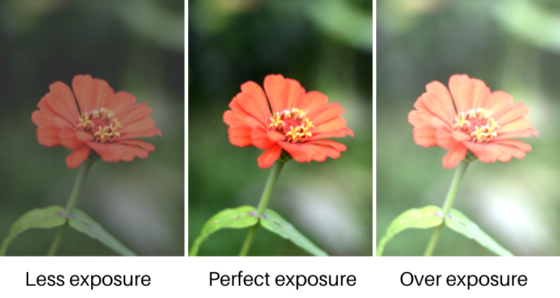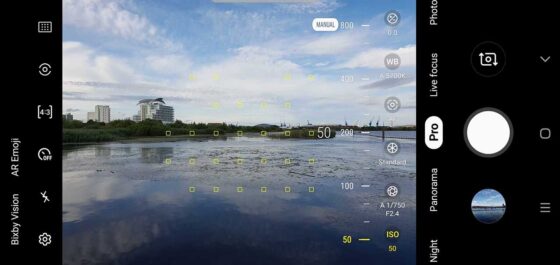- HOME
- Ecommerce branding
- Ecommerce photography from home
Ecommerce photography from home

When it comes to ecommerce, the primary thing that drives online purchase decisions is how appealing products look on your website. When a potential customer is about to make a purchase, product photos can make or break the deal.
Not only do your product pictures speak about the quality of your products, they build trust for your brand. A professionally shot photograph tells customers you care about presentation, whereas a poorly shot picture indicates a lack of attention to detail, a trait they might think extends to other aspects of your store, such as customer service. This can negatively impact your store’s sales numbers.
While professional photography is always recommended, it might not always be feasible. Associated costs (or lock downs triggered by COVID-19) might put a spanner in your creative vision. This article will walk you through some tips and tricks to click phenomenal product images using your smartphone.
Common mistakes to avoid
Incorrect exposure
Exposure is how much light you’re allowing into your photo. The right exposure is quite important for a good photograph. Too little light, or underexposure, makes the picture dark and grainy, while too much light, or overexposure, will blow out all the details in the picture. Setting the camera to the right exposure level retains the original tone and texture of the object, helping the customer see the subject clearly.

Bad framing
Try framing your picture with no distractions around. This helps to bring focus to the product. 60-70% of the frame should be occupied by the subject. A neatly framed picture definitely speaks for itself.
Dirty products/backgrounds
A clean product and background can help you capture necessary details in the photograph. Try using a microfiber cloth to clean the product to avoid scratches. Make sure your background is free from clutter to properly draw attention to the product. We’ll talk more about this later.
Pixelation
Pixelation is when a low-quality image is enlarged to the point that the pixels that make up the image start to blur. A pixelated or grainy photograph lacks details, so avoid using such images for your product catalog. Pixelation is less common these days as even phone cameras are capable of taking high resolution photos, but you should still check your photos right after taking them to make sure you will be able to use them without having to zoom in too much on the product.
Before you begin
Crawl before you walk! It’s difficult to create good product photography if you don’t actually know what good product photography looks like first. Always visit a few ecommerce sites or pinterest boards for sample images and inspiration. Photography is creative, and you need good ideas if you are to produce a catchy catalog. Notice how with a few tweaks you can take your photographs to the next level of creativity.
How to take good product photographs
Now, let’s get down to brass tacks and look at ways to create quality, attractive product photos.
Lighting and positioning
Lighting makes a huge difference in your photographs, and you must follow certain guidelines to use lighting to your advantage.
Avoid shooting in harsh daylight, as parts of the picture may look blown out and the color in your product photographs can be distinctly changed.
Pictures captured in soft, diffused light look uniform and are soothing to the eye.
A good way to achieve soft light if you don’t have a professional light box is to bounce your light source off something white or grey (a foam board, a box, or even a piece of paper) and then let the reflected light fall over your item.
Use a flashlight to fill in the shadows your products cast.
Just throwing a light up and aiming it at your product is only half the journey towards great-looking photos. How you position your product and direct the light is just as important.
Lighting your product from the front and the top will bring the best results. Not only will it reduce shadows considerably, it will ensure that whatever shadows appear will do so underneath the product, where they won’t be quite as noticeable.
For a more creative outcome, you can try setting up lights on the sides
The background should preferably always be white, as bright colors such as red or yellow tend to steal focus away from the product. If the product itself is white (or close to it), use contrasting blacks or dark gray to make sure it doesn’t disappear into the background.
Focus and framing
Focus and framing are the next area you need to think about. A sharp and focused image should be your goal. Most modern smartphone cameras allow you to tap on your subject on your phone screen to automatically focus your photo.

Also, it is advisable not to cut away a large part of your subject, which is fairly easy to do. Keep it creative, but you should remember that at least 60-70% of the screen should be occupied by the product. Place your subject at eye level for best results.

You can make your photographs interesting by adding props in the frame. We recommend using small and light-colored props to avoid distracting from your subject. Play around with props, but do not overdo them.

Editing
Editing or post-processing your pictures gives them that professional touch. Free applications such as Google Photos, Snapseed, and Lightroom are ideal for beginners and experts alike.
- Play around with Contrast to bring out the shadow effects in the picture
- Don’t overdo the Brightness as it may make the picture look blank and devoid of details.
- Saturation adds more color to your picture and makes it look vibrant. Refrain from using dramatic filters for product photographs. Your audience want to see the product and might be disappointed if the picture is very far away from reality.
Pro mode—your new best friend
If your smartphone camera has a ‘Pro’ mode, you’re in luck. This will give you advanced control over many features professional photographers use to produce stunning images.
Changing the ISO will help to lighten or darken the picture without changing the product details. Try not to exceed 300 ISO, in order to avoid digital grain in the photo.
Shutter speed is the sensor that controls the amount of light the shutter of the camera lens lets through. Faster shutter speeds result in a darker picture, while the slower ones result in a bright (and sometimes streaky) picture.

Use Exposure to adjust the brightness and contrast in the picture simultaneously.

Bonus tip for product photography:
Invest in a light box. It serves as an excellent background for your pictures. It also saves a substantial amount of time.
Conclusion
Photography is an art that requires patience, focus, and an eye for detail. For beginners, if you get the basics right, you have had a great start. Smart phone cameras have taken away the pain of product photography, and we hope that this article helps you answer some of your questions related to the subject.
Key takeaways
- Use the Pro mode in your phone to capture amazing pictures
Clean your product before you attempt to photograph it
Tap on the product on your phone’s screen to focus
60% of the screen should be occupied by the product
Block the light from unnecessary sources
Use a torch/mobile flashlight to add more light to your product from a particular direction
Use a reflector to avoid shadows and to soften the lighting on your product (a foil sheet/foil plate/white paper can be used as a low-budget reflector)
Use a diffuser to block harsh lighting (any translucent sheet or a butter paper can be used as a DIY diffuser)
Crop out the distractions in your frame
Use a Macro lens to capture details in your product
All of this information is available in our recent webinar, where Varun Raizada walked us through how to get product photography done at home. It took place at the height of the COVID-19 lockdown, so it came out of a real need! Give the recording a watch here.
Please write to us at marketing@zohocommerce.com or ashish.g@zohocorp.com for any clarifications!
